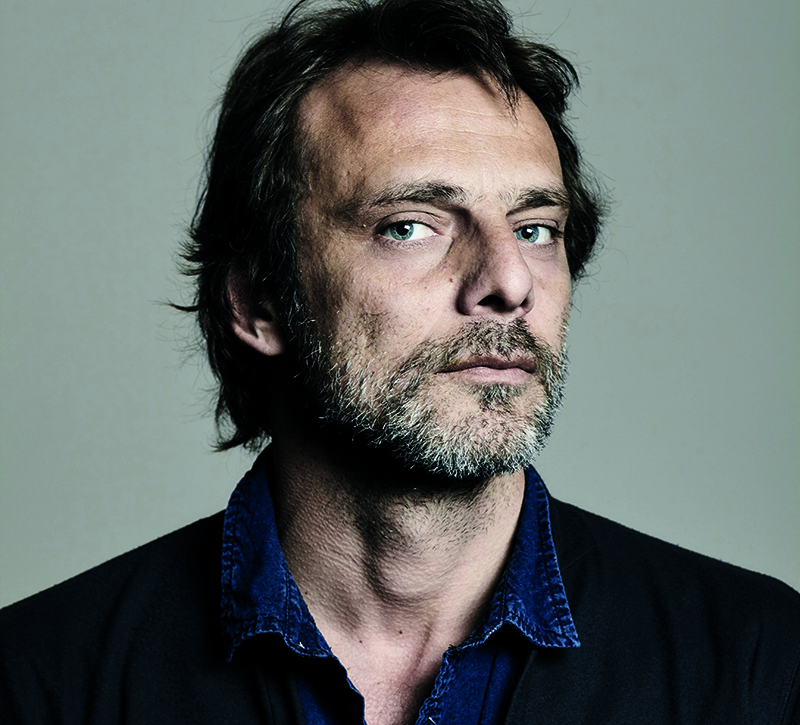The deafening smell of white
Alessandro Preziosi plays the tormented Vincent Van Gogh on the stage of the Pergola Theatre
May 8, 1889. Vincent Van Gogh, 36 years old, voluntarily entered the Maison de Santé of Saint-Paul-de-Mausole, an old convent converted into a mental hospital in Saint-Rémy-de-Provence, about twenty kilometers from Arles. He suffered from increasingly acute attacks of mania, hearing and sight hallucinations, he believed himself unable to manage his own life. The Deafening Smell of White by Stefano Massini describes the inner turmoil of the great Dutch painter, one year before his death. Alessandro Preziosi is the star of this one-act drama We meet with him after his successful performances in Naples and Spoleto and before taking the stage in Florence at La Pergola Theatre, from February 6 to 12.
What is your vision of this play?
The Deafening Smell of White explores the feelings of a man about whom we know very little from this point of view. It is the metaphor of the child-artist who strives hard to grow up, but quite unsuccessfully. He clung to a deeply childish approach to life, as shown by the way he lived when he was still with his family. Because of his disturbing hallucinations, Van Gogh was the center of his family’s attention and concern and very different from the image projected by his over 900 paintings, which were not popular for about 100 years.
What does the play try to tell about the artist?
The goal is to describe the nature of the artist’s creative process, allowing for any kind of distortion, of facts, of memory, of the reality of things. The play begins with Van Gogh being locked up in a mental hospital, in a place where there is no color other than white. This is not a fact, because he was actually allowed to paint, one month later he would produce the Starry Night. But now he is here, in a nondescript, squared room, with blank walls, a concrete cage. Though subjected and submitted to the dynamics of his mental disorder, Van Gogh is fully aware of his instability. Van Gogh is portrayed in the devastating neutrality of a vacuum.
There are, however, no certainties about the nature of his mental illness.
The mental illness had to do with his burning relationship with nature. He put all his disquieting experiences in the paintings. He was given the name of his brother who had died young, his mother would regularly take him to visit his little brother’s tomb. We tend to have a romantic view of his hallucinations, to focus on the artist, but he actually refused to accept reality and lived distorting it, to the point that he cut his ear off and committed suicide.
Did he not understand or was he not understood?
I believe he was not understood. He wanted to be understood and accepted, in which case, however, he would have not had the same power and intensity. It is the first time I play a character with whom I do not completely identify. But I do share some traits with him, first of all, the “growing up” issue. I put a lot of my personal feelings into this character. It brought all my frailty out and I placed it at this artist’s service.
When did you grow up?
I grew up quickly because I had a child at a very young age. It’s like being catapulted with a sling into the future. Then you end up going back, to experience what you believe you have missed.
What kind of relationship do you have with Florence?
Special, intimate. Florence is the city where I lived at the height of my life. My daughter was born here, as well as her mother’s entire family. They gave me the chance to enjoy and experience the city to the fullest. To me, Florence is like Capri without the sea. I am bewitched by both the city’s night-time magic and the tourist chaos during the day, and here in Florence, just like in Capri, I can walk and mingle with the crowd. I have been performing on stage in Florence since my first play, Hamlet, in 1999. I have recently performed at La Pergola Theatre in Romeo and Juliet, and I am thrilled to be back. I will do my best to live up to the audience’s expectations.
What are your plans after Florence?
I will be in Rome for three weeks at the Eliseo theatre, and then in Bologna, Trieste and Milan. At the same time, I will be working in Turin on the set of Nessuno come noi, a film based on the book by Luca Bianchini and directed by Volfango De Biasi. I have just finished shooting a TV film production directed by Giacomo Campiotti, La pellicola, whose final title will probably be Figli. It is based on the stories produced by the Liberi di Scegliere protocol, which is committed to giving a new life and dignity to young people who choose to walk away from Mafia and Ndrangheta gangs.









